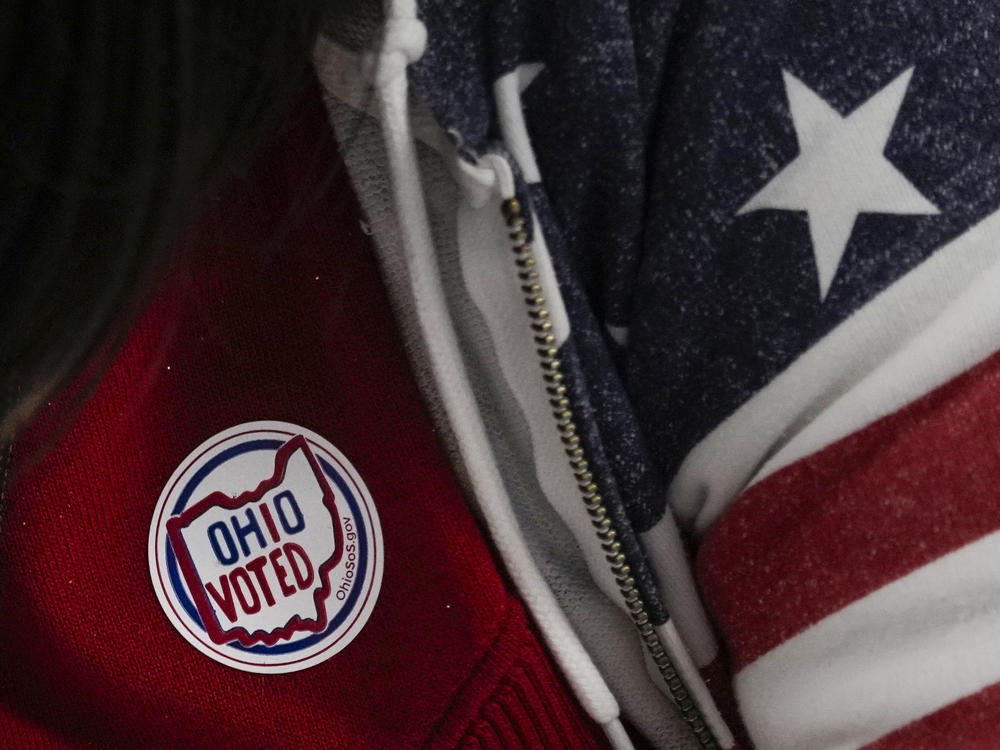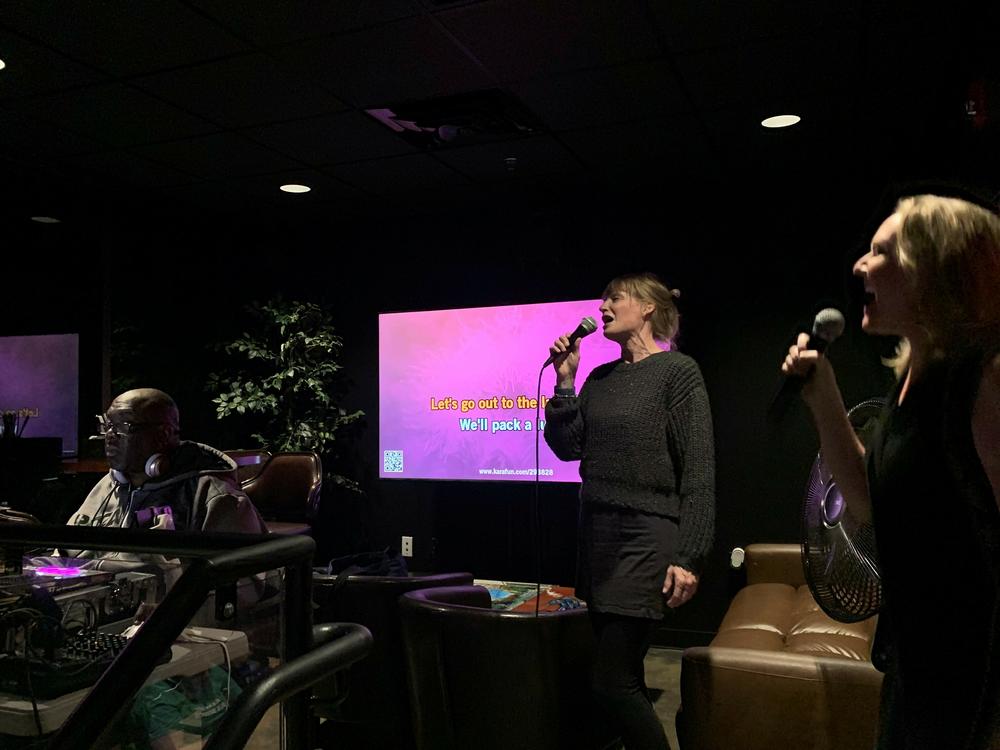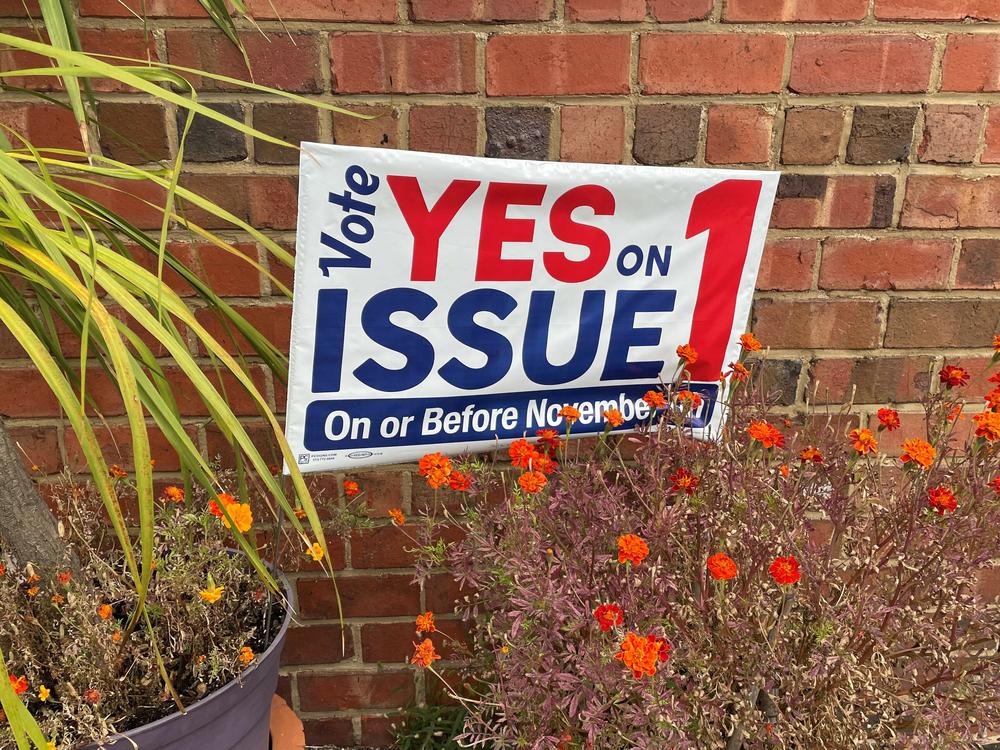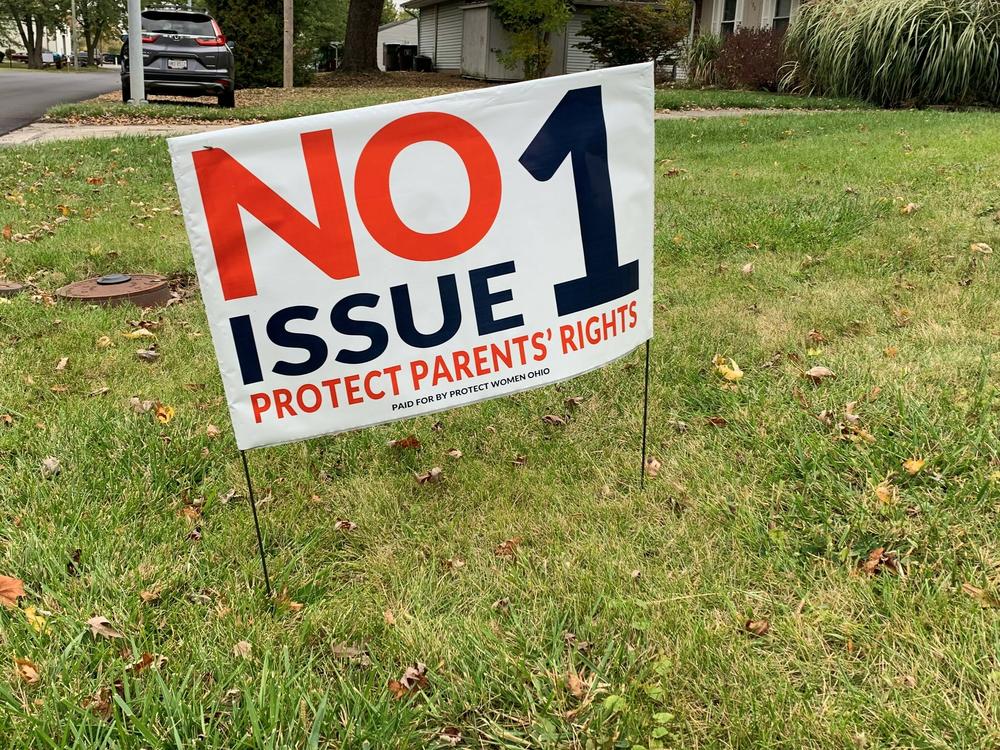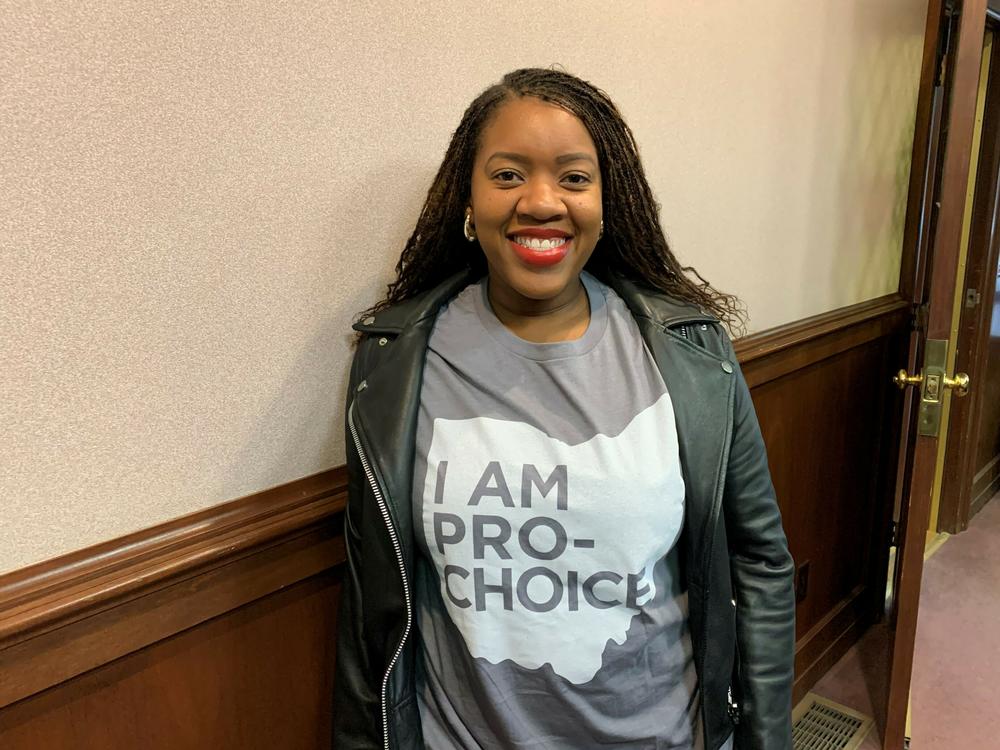Section Branding
Header Content
Abortion is on the ballot in Ohio. The results could signal what's ahead for 2024
Primary Content
COLUMBUS, Ohio — When questions about abortion have been put directly to voters in the months since the Supreme Court overturned Roe v. Wade, voters overwhelmingly have signaled support for abortion access.
Now, abortion rights activists in Ohio are wondering if that same energy that fueled success in states like Kansas and Michigan will translate to their state this year.
During a recent gathering at a cidery in Youngstown, abortion rights activists took a break from phone banking and door-knocking to belt out tunes like Shania Twain's girl-power anthem, "Man! I Feel Like a Woman!" — with the help of a DJ, a karaoke machine and a round or two of hard cider.
"Because this has been a long slog and everything can't just be work, you know?" said Alexis Smith, a local radiologist and activist who helped organize the karaoke night for activists working to pass Issue 1.
If approved, the measure would amend Ohio's constitution to guarantee the right to make reproductive health care decisions, including abortion.
Abortion rights supporters here have been inspired by the success of their counterparts in several states last year where abortion was on the ballot. Smith says they worked for months to get enough signatures to put their own ballot question before Ohio voters.
But they soon ran into another obstacle.
"Then it was, 'oh, by the way, you have a month, and then there's going to be this election that's going to decide everything,'" Smith remembered.
Republican lawmakers in Ohio called a special election in August on another measure — also called Issue 1 — that would have changed the rules and made it harder for the abortion rights amendment to pass.
Ohio voters turned out in larger-than-expected numbers to reject that effort, leaving the threshold for passing an amendment at a simple majority.
The fight over the proposed reproductive rights amendment itself is now fully underway. The back-to-back votes seem to be creating confusion in the minds of some voters.
Abortion rights supporters were asked to vote no on Issue 1 in August and yes on Issue 1 now.
"Actually, I don't know anymore," said Ariana Allen, a nursing student at Ohio State University's Lima campus. She was trying to make sense of the ballot question after talking to an anti-abortion activist who was visiting her campus.
Allen says she wants to do more research to make sure that she votes in line with her values.
"So I don't make [a] mistake — because I am for abortion rights," Allen explained.
Anti-abortion groups say they will have contacted well over 600,000 voters by election day, urging them to vote no.
Meanwhile, the abortion rights group Ohioans United for Reproductive Rights estimates their canvassers will have reached out to more than 3 million voters.
Ohioans are making this decision in a state where a strict abortion ban is waiting in the wings.
The law currently blocked in court bans most abortions after about six weeks and contains no exceptions for rape or incest. It briefly took effect last year after the Dobbs v. Jackson Women's Health decision overturned decades of abortion rights precedent — long enough for a 10-year-old rape victim to make national headlines after being forced to travel to neighboring Indiana for an abortion.
"What happened to that 10-year-old girl, let's be clear, was absolutely tragic," said Amy Natoce, press secretary for the anti-abortion group Protect Women Ohio. "I think everybody can agree on that."
Natoce, whose organization is leading the effort to defeat Issue 1, says she's grateful that the girl's rapist was caught and prosecuted. But she stops short of saying that the girl should have had access to abortion in her home state.
"That is up to the voters and the legislature to decide," Natoce added. "If Issue 1 passes, the conversation ends."
Desiree Tims leads a progressive Ohio think tank and has been working on the Vote Yes campaign. She believes Ohio voters will follow the example set in other states last year.
"What the Republicans, frankly, have done in this environment is they have created a window for advocates on the left to say, 'See, look! This is what we've been talking about,'" Tims explained. "Our greatest fears, our nightmares, are coming true. And this is our time to stand up and fight back."
The results in Ohio will be closely watched as abortion rights groups work to put ballot questions before more voters next year, including in key presidential battleground states like Arizona and Florida.
Copyright 2023 NPR. To see more, visit https://www.npr.org.
